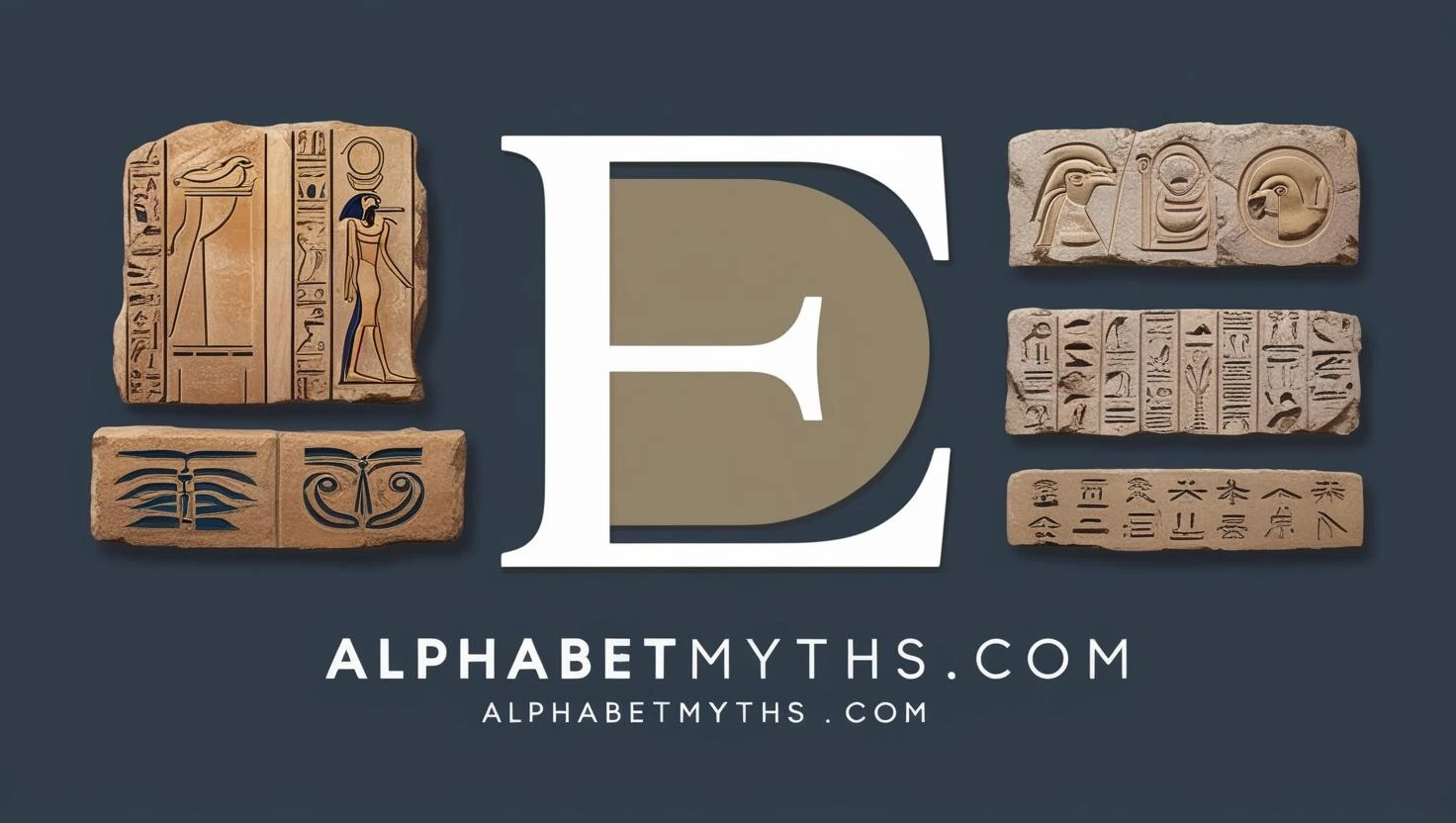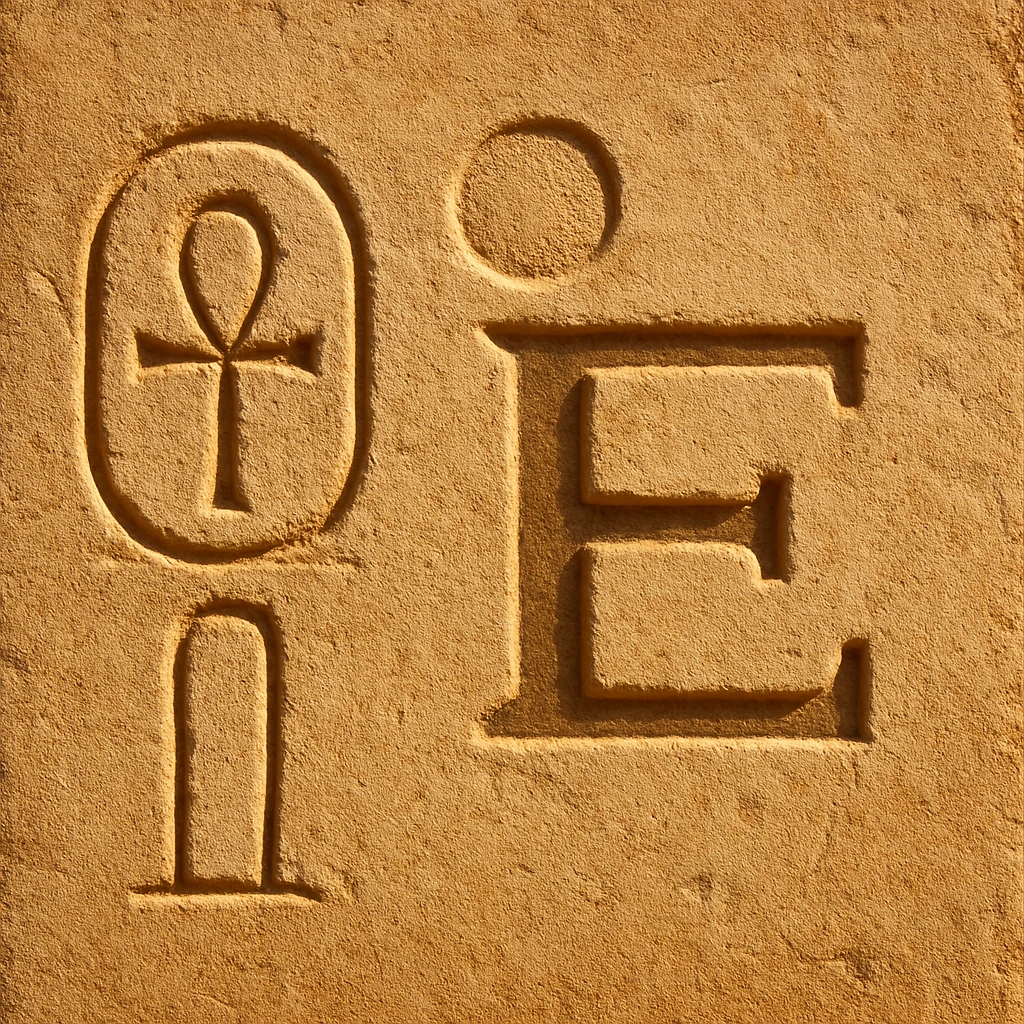
(AI Generated)
Ever thought about how crazy important the letter E actually is? It’s like the quiet backbone of our alphabet. You see it everywhere – books, emails, street signs, you name it. But who really stops to think about a single letter? Yet this simple curved line has been quietly running the show in languages worldwide for thousands of years. From ancient stone carvings to today’s text messages, E just keeps doing its thing.
Introduction to the Letter E
Letter E is like that friend who shows up to help you move apartments but doesn’t brag about it later. It’s crazy to think that three small lines stacked together could be so important to how we speak and write every day. Without it, we’d be seriously stuck when trying to express ourselves. It’s the most common letter in so many languages – not just English, but French, German, Spanish, and plenty more.
Think about it—could you construct a meaningful paragraph without using this vowel? Some authors have actually written entire novels avoiding the letter E (Georges Perec’s “A Void” comes to mind), but it’s an enormously challenging constraint. The letter shapes our expression in ways we take for granted.
And you know what’s cool? Letter E isn’t just ordinary by accident. Our mouths just seem made for making this sound. No weird tongue positions or throat gymnastics are needed. Maybe that’s why so many languages leaned into using E so heavily – it’s just easy to say!
Historical Evolution of Letter E
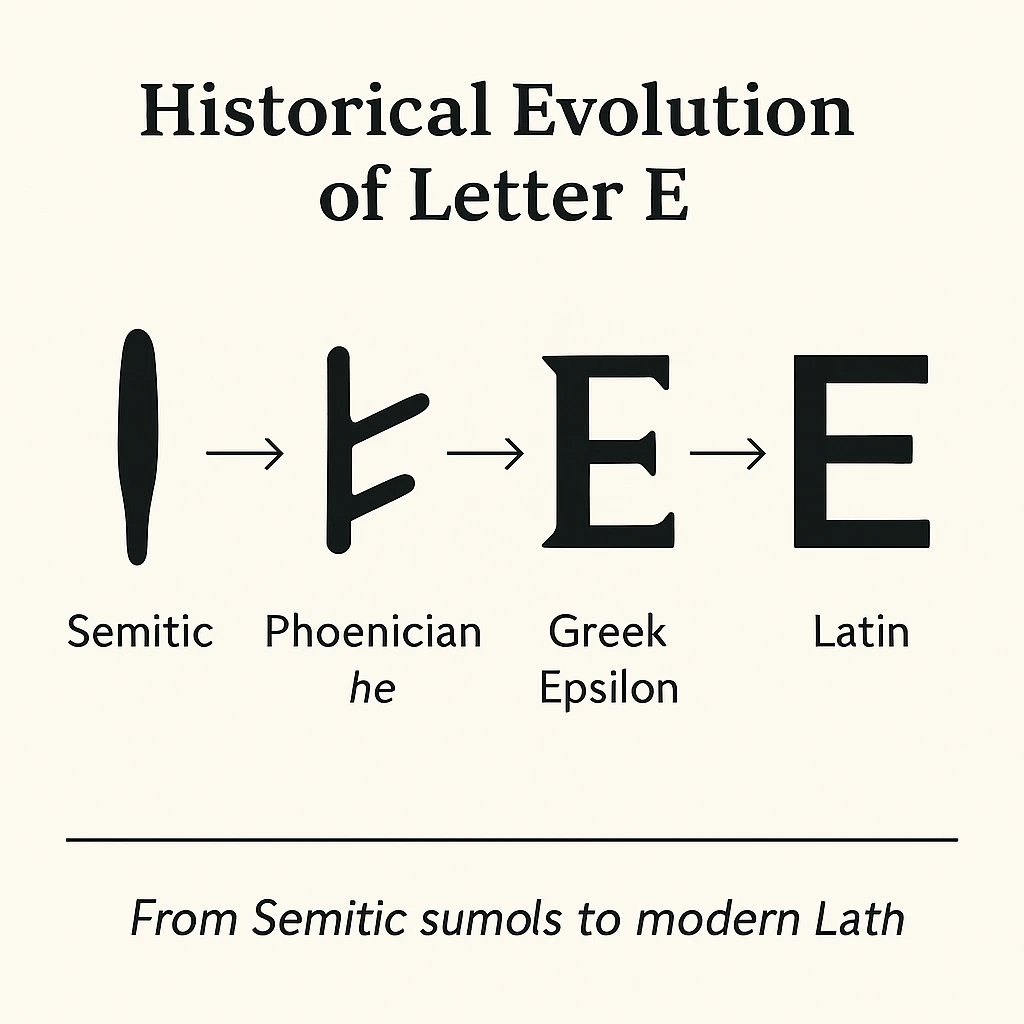
(AI Generated)
Talk about a glow-up over the centuries. E started out as something totally different 4,000 years ago – just a simple stick figure with raised arms in ancient Semitic writing. Then around 1800 BCE, the Phoenicians borrowed it and named it “he,” their word for “window.” It is funny to think our letter E was once just a little drawing of a person or a window.
When the Greeks borrowed the Phoenician alphabet, they flipped the letter horizontally and named it “epsilon.” Their version resembled our modern E but rotated counterclockwise. Later, the Romans standardized the form we recognize today, straightening those horizontal lines.
What strikes me most about letter E’s evolution is how it retained its essential structure despite traveling across civilizations and millennia. There’s something fundamentally sound about its design that survived countless cultural transmissions.
Letter E’s Role in Ancient Scripts
In hieroglyphics, the sound we associate with E appeared in symbols depicting reeds and feathers. The Etruscans (you know, those folks who heavily influenced how Romans wrote) played around with E a lot, flipping and rotating it different ways before they finally agreed on one standard version.
I find it pretty fascinating that in ancient Norse runes, they had this character called “ehwaz” that made the E sound but actually symbolized a horse. It’s not just random – horses were super important in Norse culture. It shows how these symbols weren’t just about sounds but carried all these cultural meanings too.
Letter E’s journey through ancient scripts reveals how writing systems develop through cultural exchange rather than in isolation. Each civilization borrowed, adapted, and transformed the symbols they encountered, resulting in the alphabet we use today.
Phonetic Versatility of E
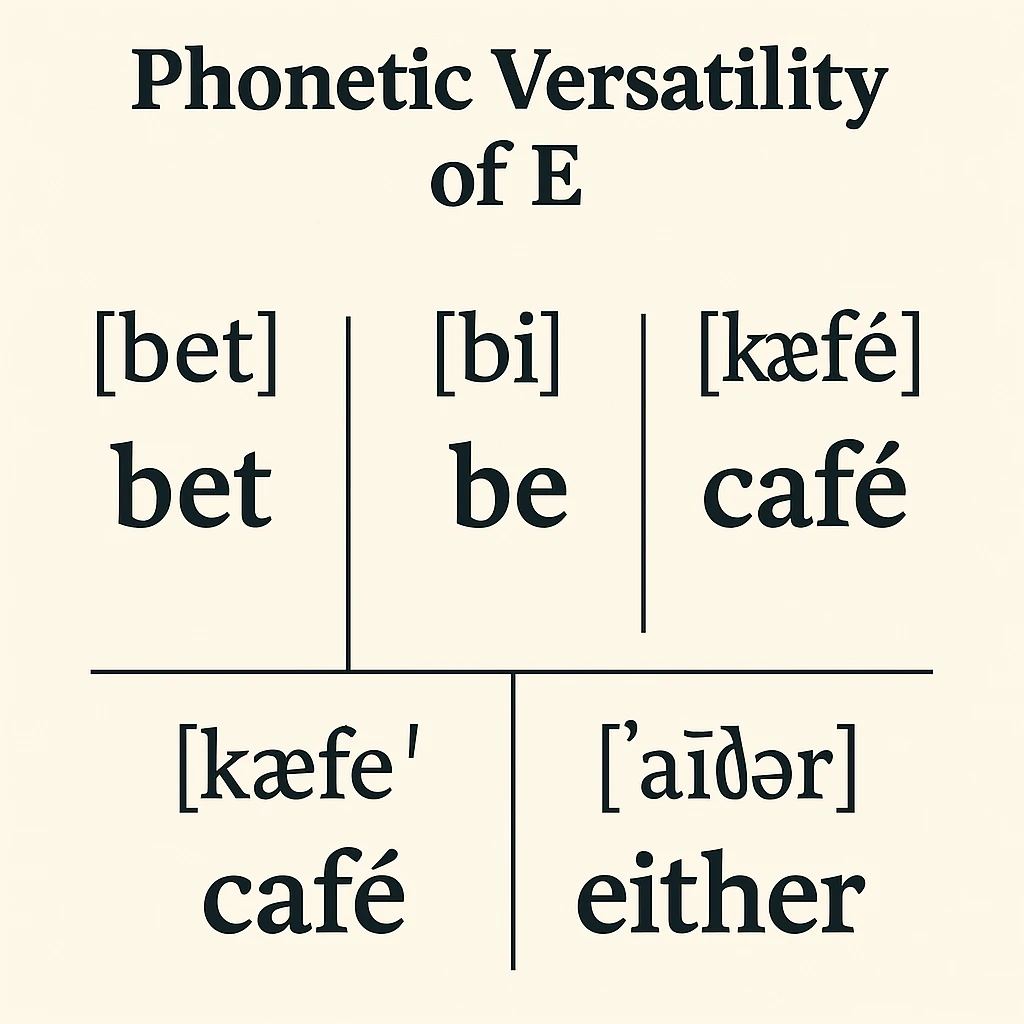
(AI Generated)
It’s pretty fascinating how we squeeze so many different sounds out of just one letter. In English alone, letter E shows up in completely different ways depending on the word. Sometimes it’s the short “eh” sound like in “bed” or “get.” Other times it stretches out into that long “eee” sound in words like “sheep” or “meet.” And then it gets lazy in words like “the” where it barely makes any sound at all! Few letters demonstrate such versatility.
This phonetic flexibility makes E essential for English pronunciation. It serves as the silent marker that changes pronunciation in countless words like “fate” versus “fat” or “bite” versus “bit.” It’s like a hidden director, invisibly guiding how we say words.
The weirdest thing to me is how E often hangs out at the end of words without actually making any sound itself. Like in “bake” or “time” – that final E is totally silent, but it completely changes how we say the word. Without it, you’d have “Bak” and “Tim,” which sound totally different! It’s like E is this sneaky puppet master, changing everything around it while staying invisible.
E in Various Languages
While English embraces E enthusiastically, other languages take this relationship even further. French uses E with various accents (é, è, ê) to distinguish different sounds and meanings. Spanish has its accented é to mark exceptions to standard stress patterns.
In Finnish, letter E appears in nearly every word, creating a distinctive sound profile for the language. Italian employs E as a word unto itself, serving as a conjunction meaning “and”—perhaps the ultimate efficiency for such a vital letter.
What fascinates me is how E adapts to each language’s unique needs while maintaining its essential character. Like water taking the shape of different containers, E fills whatever linguistic role a language requires.
Diacritical Variations of E
Accents transform E into a whole family of characters with distinct personalities. That little line going up (é) usually means you raise your voice a bit when you say it, like in “café.” Then there’s the line that slants down (è), which often tells you to drop your voice a little lower. These tiny marks make a big difference in how words sound! The circumflex (ê) frequently marks where historical letters have disappeared.
In Czech and Hungarian, the háček transforms e into ě, creating a “ye” sound. German introduces the umlaut with ë, while Scandinavian languages feature ø and æ as E-adjacent characters with unique pronunciations.
These variations demonstrate language’s incredible adaptability. Rather than creating entirely new letters, cultures modified E with diacritical marks, extending its utility while maintaining its basic identity. It’s like cultural evolution in miniature.
E in Numerology and Symbolism
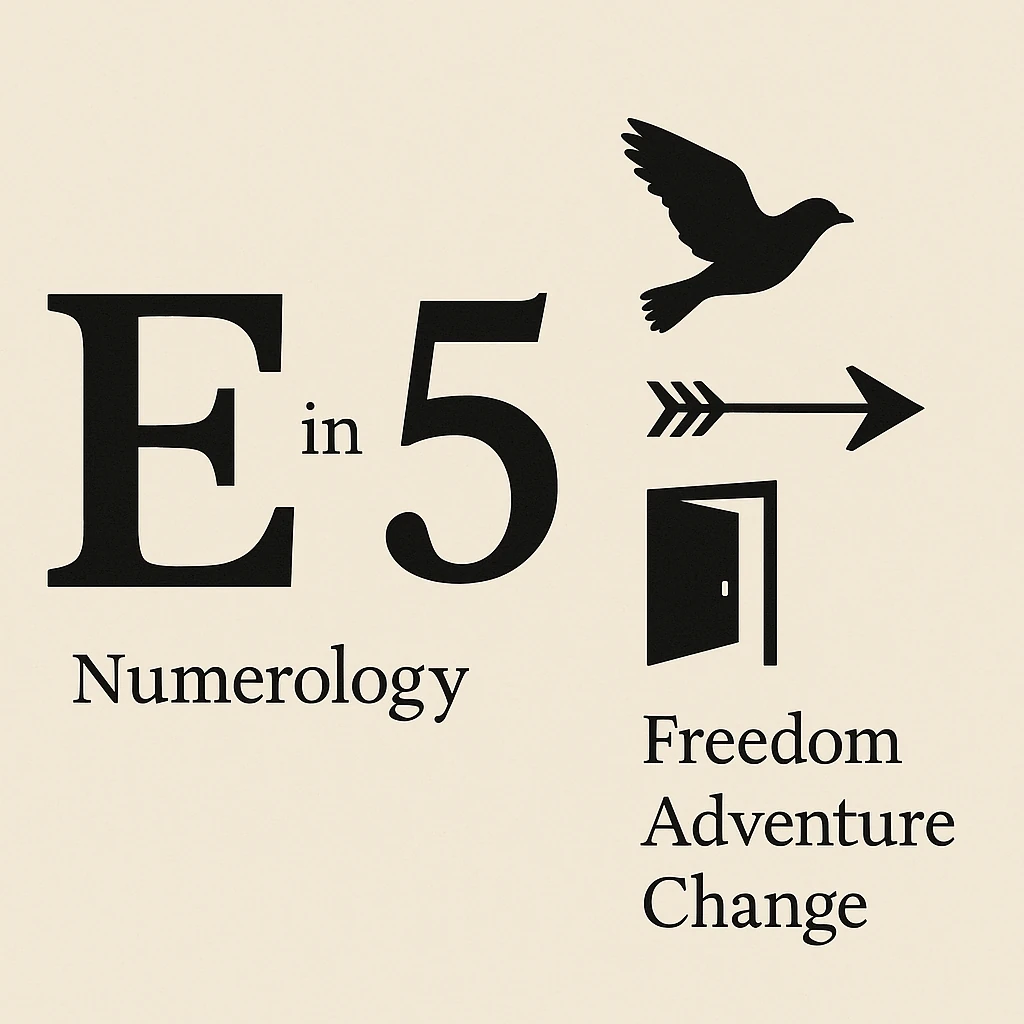
(AI Generated)
People who are into numerology connect letter E with the number 5, which is all about freedom and shaking things up. It’s pretty cool actually – in that ancient number-letter system called gematria, E gets linked with ideas about moving forward and transforming. Not too shabby for a single letter!
Since letter E sits fifth in line in our alphabet, it’s got this perfect middle-ground thing going on. It’s not upfront showing off like A, but it’s not hanging out at the back of the line either. It’s right in that sweet spot. Some esoteric traditions see this middle-ground position as significant, representing equilibrium and harmony.
I’ve always found it interesting that E forms part of many powerful symbolic words: “energy,” “eternity,” “essence,” and “enlightenment.” Perhaps its fundamental nature in language makes it naturally suited to concepts that touch on deep truths.
Cultural Significance of E
Letter E appears in countless cultural references and wordplay. It’s the grade that signals average performance in American education but excellence in European systems—a small letter carrying very different connotations across cultures.
In music, letter E represents one of the fundamental notes in Western scales. Musicians tune their instruments to E, making it literally the sound from which harmony emerges. Kind of perfect when you think about it, right? It just fits.
There are “E-ticket rides” at Disney, we talk about giving an “E for effort” when someone tries hard, and people get all excited about “E-day” when something big is happening. This little letter has sneaked into our everyday talk without us even noticing. Funny how we just toss these phrases around without thinking about how much weight we’ve given to one tiny character of the alphabet!
E in Modern Communication
The digital age has given E new significance. It appears in “email,” “e-commerce,” and countless other technological terms where it represents “electronic.” We see it so often that we don’t even register it anymore – it’s just part of the world.
And then there’s texting, where E often gets the boot. We type “thx” instead of “thanks” and “pls” instead of “please,” kicking out the Es to save those precious few characters or just to type faster. Yet even in its absence, E makes its importance known—we mentally insert it when reading these abbreviations.
Social media platforms like Twitter have created entire communities around the meme of replacing other letters with the letter E for humorous effect. Somehow, this simple character continues to find new cultural relevance in each technological era.
E’s Presence in Science and Mathematics
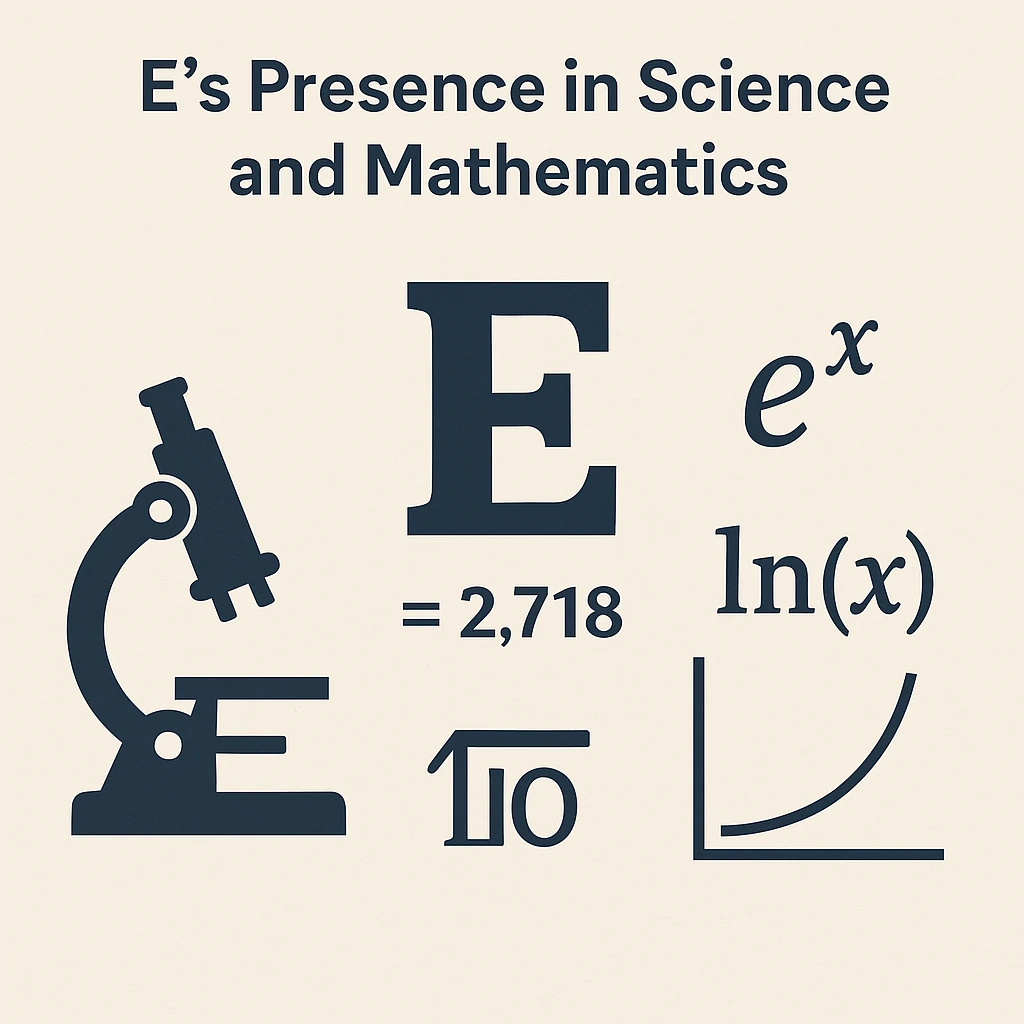
(AI Generated)
Math nerds use e for that super important number (it’s about 2.71828) that shows up in natural logarithms. Pretty cool that they picked the most common letter for one of their most important constants, right?
When physicists talk about Einstein’s famous E=mc², that E stands for energy – basically the thing that makes everything in the universe happen! Engineers have their own thing too, using letter E for Young’s modulus, which measures how stretchy or stiff materials are.
Science is absolutely loaded with E words: electron, evolution, element, enzyme, ecology… the list goes on forever. It’s not just random chance – something about the way letter E sounds makes it perfect for all these technical terms across pretty much every scientific field.
Artistic Representations of E
Typography has created countless interpretations of the letter E, from the flowing scripts of calligraphy to the stark minimalism of modern fonts. Each design choice reveals something about the era and culture that produced it.
Artists love playing with letter E – you see it in everything from artsy concrete poetry to big corporate logos. It just has this perfect balance that looks good while still being super easy to recognize.
One thing I really like about E is how it stays itself no matter what you do to it. You can stretch it out, twist it around, add all kinds of decorations, or strip it down to basics, but you’ll still know it’s an E. That’s some solid design right there!
E in Literature and Media
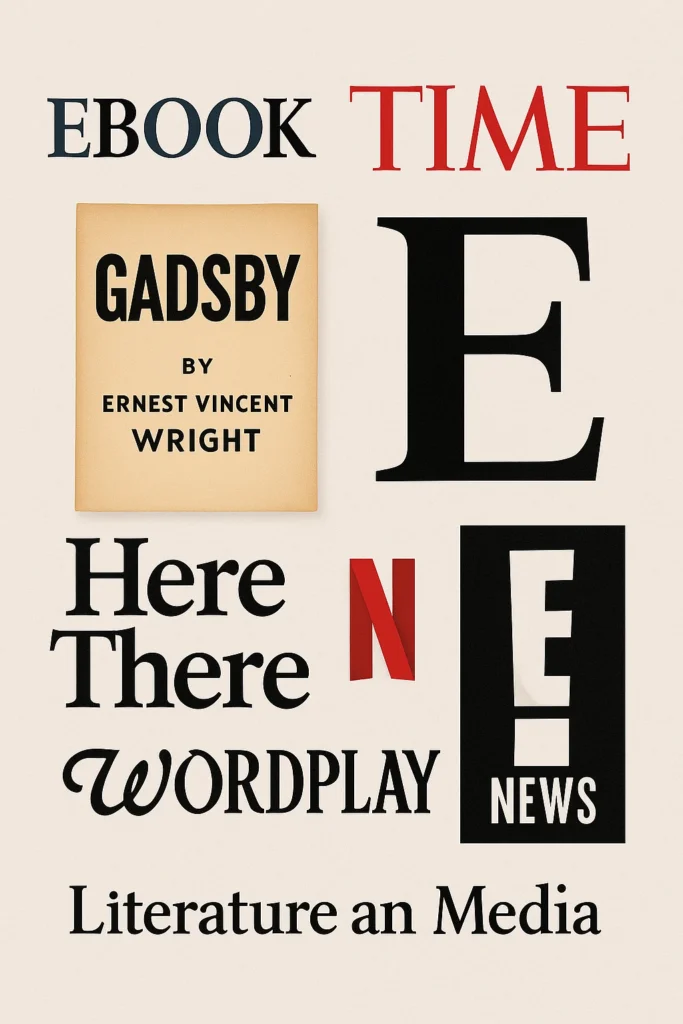
(AI Generated)
Authors have played with E throughout literary history. Beyond Perec’s E-less novel, there’s “Gadsby” by Ernest Vincent Wright—another work that avoids the letter E entirely, an astonishing feat considering the letter’s prevalence.
In contrast, poet Christian Bök created “Eunoia,” with chapters using only one vowel each. The E chapter demonstrates the letter’s versatility, constructing coherent text using only this single vowel alongside consonants.
Television gave us “Sesame Street” episodes sponsored by E, introducing generations of children to this fundamental character. Even in children’s media, E maintains its position of prominence and importance.
Psychological Impact of Letter E
The sound of letter E often appears in words with positive emotional content: “peace,” “serene,” and “pleasant.” Some linguistic researchers suggest certain sounds carry inherent emotional qualities, with E frequently associated with mild positivity.
Those marketing experts have figured out that brands with E in their names tend to do better when they test them on consumers. Maybe it’s because letter E sounds somehow make us feel good, or maybe we just like what’s familiar. Either way, companies are definitely cashing in.
Ever wonder if the sounds we hear and say all the time might be secretly affecting how we feel? I sometimes think about how these simple speech sounds could be pulling strings in our brains without us even noticing. Pretty trippy when you really think about it.
E in Branding and Marketing

(AI Generated)
Look at successful brands, and you’ll find E everywhere: Google, Facebook, Apple, Mercedes, and Nike. Marketing experts recognize the letter’s value in creating memorable, pronounceable brand names.
Letter E appears particularly prominently in tech branding: Dell, Intel, and Microsoft Edge. Its association with “electronic” makes it naturally suited for companies wanting to project a modern, technological image.
What strikes me about E in branding is its chameleon-like quality. It can appear in luxury brands or budget offerings, in traditional companies, or in cutting-edge startups. The letter adapts to whatever brand personality it needs to represent.
Notable Words Beginning with E
So many strong words start with E in English: “extraordinary,” “exceptional,” “excellent,” and “essential.” These aren’t just any words – they’re the ones we use when we really want to make a point. Maybe starting with that E sound gives them a little extra kick.
And what about all those emotion words? “Ecstasy,” “empathy,” “enjoy,” “enthusiasm” – they’re all about feelings and they all start with E. Could be a coincidence, but it makes you wonder if there’s something about that sound that just clicks with how we express emotions.
Even E-starting words with negative connotations carry force: “evil,” “egregious,” “enemy.” The letter introduces concepts with significance and impact, regardless of their positive or negative nature.
Fun Facts About the Letter E
Weird fact: try counting out loud – “one, two, three, four…” You literally can’t say a single number without using the letter E until you hit “thousand.” Go ahead, I’ll wait! Pretty crazy when you actually test it.
E is the most commonly destroyed key on typewriters and keyboards due to its frequent use. The physical wear on this character reflects its linguistic importance tangibly.
In Morse code, E is just a single dot (•) – that’s it! They gave the simplest, quickest signal to the letter we use most. Smart thinking, right? One quick tap and you’ve got the most common letter in English. It’s like the Morse code creators were saying, “Let’s make this super efficient for everyone.”
Words That Begin With Letter E
Electrifies language with emotion, expression, and endless possibilities. These words bring their essence to life:
- Earnings – The results of your creative or professional effort, especially online. How to grow earnings
- E-commerce – Buying and selling online, the backbone of digital business. Intro to e-commerce
- Empathy – The emotional thread that connects us all. What is empathy
Conclusion: The Enduring Legacy of E
As we’ve seen, E transcends its role as a mere letter. It serves as a cultural touchstone, a mathematical constant, a branding element, and much more. Its journey from ancient pictographs to digital communication reflects human history itself.
What makes E truly remarkable is its ability to remain relevant through every linguistic and technological shift. You know how everything keeps changing – slang comes and goes, emojis take over, we’re always finding new ways to communicate – but E just hangs in there, doing what it’s always done. No matter how we evolve, we still need it.
So yeah, next time you’re firing off a text or chatting with a friend, maybe think about how this one little letter has been helping humans talk to each other basically forever. Not too shabby for just three little lines, right?
Continue Your Alphabet Journey
Explore More Letters:
A | B | C | D | E | F | G | H | I | J | K | L | M | N | O | P | Q | R | S | T | U | V | W | X | Y | Z
Share this article:
Did you enjoy learning about the letter E? Share your thoughts in the comments below or spread the knowledge by sharing this article with fellow language enthusiasts!
